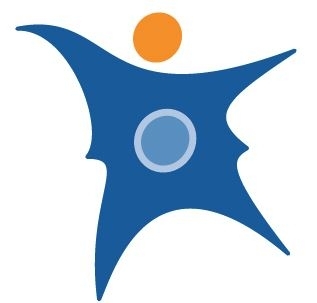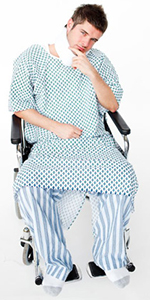Neuroethics
 Neuroethics research at Novel Tech Ethics has been funded through two CIHR grants; Therapeutic Hopes and Ethical Concerns (2005-2009) and States of Mind: Emerging Issues in Neuroethics (2006-2012).
Neuroethics research at Novel Tech Ethics has been funded through two CIHR grants; Therapeutic Hopes and Ethical Concerns (2005-2009) and States of Mind: Emerging Issues in Neuroethics (2006-2012).
Deep Brain Stimulation (DBS)Beyond research ethics, beyond the ethics of clinical care, lie questions about the transformations of human identy and society by current and emerging insursions into the brain.
Is DBS a threat to identity? There are numerous accounts of how DBS has dramatically changed the symptoms of many neurological diseases from Parkinsons' to Obsessive Compulsive Disorder. In some of these accounts is the story of how someone's personality was significantly altered, sometimes causing more concern to family members than to the patient.
Deep Brain Stimulation, Personal Identity, Neuroenhancement [PDF - 1.1 MB]. 2013 Neuroethics International Conference 'Neuroethics in Context: East Meets West'. Seoul, Korea, 11 January 2013
Nir Lipsman. Mary Pat McAndrews, Andres M. Lozano & Mark Bernstein (2011) Research Consent for Deep Brain Stimulation in Treatment-Resistant Depression: Balancing Risk with Patient Expectations [PDF - 76 KB], AJOB Neuroscience, 2(1): 39-41
Françoise Baylis (2011) "I am Who I Am": On the Perceived Threats to Personal Identity from Deep Brain Stimulation, Neuroethics, DOI 10.1007/s12152-011-0137-1.
Corporation Ends First-in-Human Stem Cell Trial
 In November 2011, Geron announced the premature end of its first-in-human stem-cell trial for spinal-cord injury patients. The stated reason was financial rather than the safety or efficacy of the cells under study. This decision has many ethical implications for both the research participants and the role of for-profit corporations engaged in clinical research.
In November 2011, Geron announced the premature end of its first-in-human stem-cell trial for spinal-cord injury patients. The stated reason was financial rather than the safety or efficacy of the cells under study. This decision has many ethical implications for both the research participants and the role of for-profit corporations engaged in clinical research.
California stem cell agency needs to study itself. Michael Hiltzik, Los Angeles Times, December 7, 2011.
The Back Story on Baylis and the Ethics of Geron's hESC Trial, California Stem Cell Report, December 5, 2011
California Stem Cell Agency and Geron: Ethical Issues with Sale of hESC Trial, California Stem Cell Report, December 3, 2011
Geron's Discontinued Stem Cell Trial: What About the Research Participants? Françoise Baylis, Bioethics Forum, December 2, 2011
Where Research Ethics Meet Profit Margins [PDF - 192 KB], Françoise Baylis, The Mark, November 25, 2011
MORE ON THE TRIAL
Bretzner F., Gilbert F., Baylis F. & Brownstone R. (2011) Target Populations for First-In-Human Embryonic Stem Cell Research in Spinal Cord Injury. Cell Stem Cell, 8(5): 468-476.
Wirth E., Lebkowski J. & Lebacqz K. (2011) Response to Frederic Bretzner et al. "Target Populations for First-in-Human Embryonic Stem Cell Research in Spinal Cord Injury" Cell Stem Cell, 8(5): 476-478.
Bretzner F., Gilbert F., Baylis F. & Brownstone R. (2011) Response to Wirth et al [PDF - 55 KB]. Cell Stem Cell
Brain Death
CCDT clinical guidelines for brain death determination in Canada are medically unsafe, legally flawed, and publicly non-transparent -- Brainstem criterion now replaces the whole-brain death criterion
 Starting in 2003, the Canadian Council for Donation and Transplantation (‘CCDT’), a now-defunct organization created by the Canadian government to expand the donor organ supply, drafted and disseminated two new sets of government-approved clinical guidelines to guide physicians in declaring neurological death (i.e., brain death) before withdrawing life support or harvesting organs.
Starting in 2003, the Canadian Council for Donation and Transplantation (‘CCDT’), a now-defunct organization created by the Canadian government to expand the donor organ supply, drafted and disseminated two new sets of government-approved clinical guidelines to guide physicians in declaring neurological death (i.e., brain death) before withdrawing life support or harvesting organs.
This first new clinical guideline, ‘Severe brain injury to neurological determination of death: a Canadian forum’ (abbreviated ‘SBINDD’ [PDF - 272 KB]) was followed in 2006 by a second set of guidelines ‘Brain blood flow in the neurological determination of death’ (or ‘BBFNDD’) [PDF - 59 KB] which complemented and partially amended the first guideline set.
As discussed by Jacquelyn Shaw in an April 2012 article [PDF - 1.1 MB] published in the McGill Journal of Law and Health, and by health reporter Tom Blackwell’s front-page article on this research in the National Post newspaper in August 2012, the SBINDD and BBFNDD guidelines reveal major, unsettling changes in how brain death may now be declared in Canada:
- Both SBINDD and BBFNDD allow brain death to be declared using a brainstem criterion: death can now be declared when just the lower, brainstem portion of the brain is non-functional, in contrast to the whole-brain criterion used for 35 years by Canada and almost all OECD nations, which requires both the upper portion of the brain, the cortex responsible for conscious thought, to also be non-functional. A brainstem criterion was previously rejected as unsafe due to unalleviated concerns that a completely locked-in patient (paralyzed but possibly capable of awareness) could be declared brain-dead using a brainstem criterion, while this concern is addressed by the whole-brain criterion;
- Both guidelines allow brain death to be declared when therapeutic (or higher) doses of barbiturates, sedatives and analgesics are present in patient’s system, an unheard-of change from decades of past practice because barbiturates can produce completely reversible, death-like states, risking brain death misdiagnoses. With no apparent scientific justification, BBFNDD even simplified the brain death procedure for some barbiturate-affected patients. As indicated below by details in Ari Joffe’s article, this change may have been implicated in the brain death misdiagnosis of an Edmonton child;
- The guidelines have removed ‘wait times’ between the traditional two sequential brain death tests, now allowing brain death to be declared via a one-time, simultaneous determination by two physicians. This change removes an important means of testing if the patient’s unresponsive state is irreversible, and may misdiagnose patients with transient, completely reversible conditions, which-- as in barbiturate intoxication or hypothermia-- can mimic brain death.
 The guideline changes potentially allow brain death to be declared earlier in a patient’s progression, making any donor organs available for harvest sooner, but at the risk of premature death declaration. These medically unsafe guidelines were created without public input during, and with no public notification subsequently, and should urgently be replaced with safer guidelines, to avoid misdiagnoses such as the one discussed below.
The guideline changes potentially allow brain death to be declared earlier in a patient’s progression, making any donor organs available for harvest sooner, but at the risk of premature death declaration. These medically unsafe guidelines were created without public input during, and with no public notification subsequently, and should urgently be replaced with safer guidelines, to avoid misdiagnoses such as the one discussed below.
In 2009, Alberta neurologist Dr. Ari Joffe reported on a 10-month-old Edmonton, Alberta baby whose brain death misdiagnosis occurred using the SBINDD guidelines correctly, as they were intended to be used. Death was declared simultaneously by two pediatric intensivist physicians, with no wait time, just 7.5 hours after the patient had received a therapeutic barbiturate dose (phenobarbital) as the guidelines permit, although, according to most sources, the clearance time for barbiturates from the body is approximately 2-3 days. The misdiagnosis was attributed by an author of the SBINDD guidelines, not to safety flaws in the guidelines, but to error by the pediatric intensivists, who were incorrectly claimed to have declared death while the child was hypothermic. However, Dr Joffe’s records show the boy was at normal body temperature when misdiagnosed as dead and was not hypothermic. Sadly, after discovery of the misdiagnosis, the child ultimately did not survive in the longer term.
With the CCDT’s dissolution in 2008, Canadian Blood Services (CBS) inherited the CCDT’s funding, mandate to expand organ supplies and coordinate a national organ donation system and some key personnel. More recently, in June, 2012, CBS announced its National Strategy to increase organ donation and transplantation, noting that organ supplies still do not meet Canada’s growing need for organ transplants. It remains to be seen whether CBS will issue future brain death guideline amendments and if so, whether these will continue, or correct, the trends that the SBINDD and BBFNDD guidelines have begun.
A Tragic Death and a Fight for Life
ImpactEthics.ca blog post by L. Syd Johnson, January 29 2014
Needed: Better Guidlines for Defining Death
ImpactEthics.ca blog post by Jacquelyn Shaw, April 4 2014
Dead Enough - CBC the fifth estate documentary
Aired March 21 2014
Page last updated August 2015.

